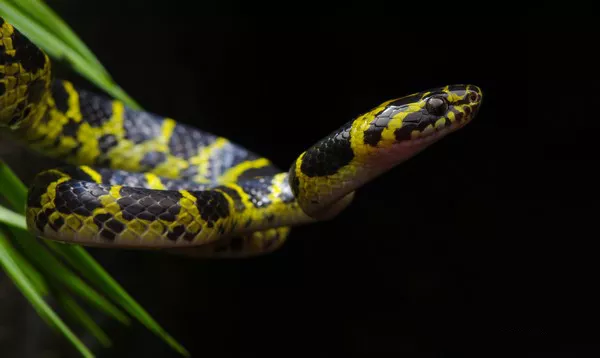Corn snakes, with their striking patterns and docile nature, have long been popular among reptile enthusiasts and pet owners. Native to the southeastern United States, these non-venomous constrictors are admired for their beauty and relatively easy care compared to other snake species. However, like all animals, corn snakes are susceptible to certain health issues that can affect their well-being.
In this comprehensive article, we will explore the various health problems that can affect corn snakes, starting with an introduction to their breed characteristics and living habits. We will then delve into common health issues, their symptoms, causes, and preventive measures to ensure that these fascinating creatures remain healthy and vibrant throughout their lives.
Introduction to Corn Snakes
Origin and History
Corn snakes (Pantherophis guttatus) are native to the southeastern United States, where they inhabit a range of environments from deciduous forests and grasslands to agricultural areas. Their name is believed to have originated from their habit of living in cornfields, where they help control rodent populations. Corn snakes have been bred in captivity for decades, resulting in a variety of color morphs and patterns that enhance their appeal as pets.
Appearance
Corn snakes are medium-sized constrictors, typically reaching lengths between 3 to 5 feet (0.9 to 1.5 meters). They have slender bodies with a distinctive pattern of light and dark bands that provide excellent camouflage in their natural habitat. Their coloration can range from bright oranges and reds to more subdued browns and grays, depending on the specific morph.
Their head is slightly distinct from the body, with large, round eyes and a blunt snout. This appearance, combined with their calm demeanor, makes corn snakes popular among beginners and experienced herpetologists alike.
Behavior and Temperament
Corn snakes are known for their gentle and non-aggressive nature. They are often described as being easy to handle, making them suitable pets for both new and experienced snake owners. These snakes are primarily nocturnal, becoming more active during the evening and night.
In their natural environment, corn snakes are solitary creatures, but in captivity, they adapt well to interactions with their owners. They exhibit a range of behaviors from burrowing and climbing to exploring their surroundings, which can be observed in well-enriched enclosures.
Habitat and Care in Captivity
In captivity, corn snakes require a carefully maintained environment to thrive. Their enclosure should mimic their natural habitat as closely as possible, providing a temperature gradient, proper humidity, and hiding spots. A typical setup includes a temperature range between 75-85°F (24-29°C) during the day and slightly cooler temperatures at night, with humidity levels maintained around 40-50%.
A proper diet is essential for their health. Corn snakes are carnivorous and primarily feed on appropriately-sized rodents. Their feeding schedule can vary depending on age and size but generally includes feeding once every 7-14 days.
Regular cleaning of their enclosure and monitoring their health through routine check-ups with a reptile veterinarian are crucial for maintaining their well-being.
Common Health Problems in Corn Snakes
Despite their robust nature, corn snakes are not immune to health problems. Understanding these issues is key to providing optimal care and ensuring that your snake remains healthy.
Respiratory Infections
Symptoms: Respiratory infections are one of the most common health problems in corn snakes. Symptoms include wheezing, labored breathing, nasal discharge, and excessive mucus. In severe cases, the snake may exhibit open-mouth breathing or lethargy.
Causes: Respiratory infections are often caused by improper environmental conditions, such as poor ventilation, inadequate temperature regulation, or high humidity. Stress, overcrowding, and suboptimal husbandry practices can also contribute to these infections.
Prevention and Treatment: Maintaining a clean, well-ventilated enclosure with proper temperature and humidity levels is crucial. If a respiratory infection is suspected, it is important to consult a veterinarian experienced with reptiles. Treatment typically involves antibiotics or other medications prescribed by a vet.
Parasites
Symptoms: Parasites can affect corn snakes internally or externally. Internal parasites such as nematodes or protozoa may cause weight loss, diarrhea, or vomiting. External parasites like mites or ticks can lead to skin irritation, excessive shedding, or visible parasites on the skin.
Causes: Parasites can be introduced through contaminated food, poor hygiene, or contact with other infected animals. Wild-caught snakes are particularly at risk for carrying parasites.
Prevention and Treatment: Regularly cleaning the enclosure and providing a clean, nutritious diet helps prevent parasite infestations. If parasites are detected, a veterinarian can provide appropriate treatments, such as dewormers for internal parasites or topical solutions for external ones.
Skin Issues
Symptoms: Skin issues in corn snakes can manifest as retained shed skin, blister disease, or scale rot. Retained shed skin may be noticeable as patches of old skin clinging to the snake. Blister disease is characterized by fluid-filled blisters on the skin, while scale rot involves the deterioration of the skin and scales, often leading to lesions or sores.
Causes: These issues can arise from improper humidity levels, unsanitary conditions, or injuries. Retained shed skin is often a result of low humidity or insufficient soaking opportunities, while blister disease and scale rot are commonly associated with bacterial or fungal infections.
See Also: Do Corn Snakes Get Teeth?
Prevention and Treatment: Ensuring the enclosure maintains appropriate humidity levels and providing a clean environment are key preventive measures. For treatment, consult a veterinarian to address the underlying cause and provide suitable medication or care, such as antibiotics for infections or proper humidity management.
Obesity
Symptoms: Obesity in corn snakes is characterized by an unusually large or bloated appearance, with excessive fat deposits. This condition can lead to difficulties in movement and general health problems.
Causes: Obesity is usually caused by overfeeding or providing food that is too large. Inadequate exercise or activity in the enclosure can also contribute to weight gain.
Prevention and Treatment: To prevent obesity, ensure that you feed your corn snake an appropriate-sized prey item and adhere to a regular feeding schedule. Regularly monitor your snake’s weight and adjust its diet as needed. If your snake is already overweight, consult a veterinarian to develop a suitable weight management plan.
Metabolic Bone Disease (MBD)
Symptoms: MBD is a condition resulting from a lack of calcium or improper calcium-to-phosphorus ratios in the diet. Symptoms include deformities in the spine or limbs, lethargy, and difficulty moving.
Causes: MBD typically occurs due to inadequate calcium levels or poor diet. In captivity, corn snakes may not receive sufficient calcium if their diet is not well-balanced or if they do not have access to appropriate supplements.
Prevention and Treatment: Providing a diet that includes calcium supplements and ensuring proper calcium-to-phosphorus ratios can prevent MBD. If MBD is suspected, a veterinarian can recommend appropriate treatments, which may include dietary adjustments and supplementation.
Diagnostic and Treatment Approaches
Veterinary Care
Regular veterinary check-ups are crucial for early detection and treatment of health issues in corn snakes. A reptile veterinarian will conduct thorough examinations and may perform diagnostic tests such as fecal exams, blood work, or radiographs to assess the snake’s health.
Husbandry Adjustments
Many health problems in corn snakes can be prevented or managed through proper husbandry practices. This includes maintaining appropriate temperature gradients, humidity levels, and ensuring a clean and secure enclosure.
Behavioral Observations
Observing your corn snake’s behavior can provide valuable clues to its health. Any changes in eating habits, activity levels, or appearance should be noted and discussed with a veterinarian. Early intervention can prevent minor issues from escalating into more serious health problems.
Conclusion
Corn snakes, with their vibrant patterns and friendly nature, make wonderful pets. However, like all animals, they are susceptible to a range of health issues that can impact their well-being. By understanding common health problems, their symptoms, and appropriate preventive measures, you can ensure that your corn snake remains healthy and happy.
Regular veterinary care, proper husbandry, and attentive observation are key to maintaining the health of your corn snake. With the right care, these fascinating reptiles can live long, healthy lives, continuing to delight their owners with their unique beauty and charm.
In summary, while corn snakes do face health challenges, most issues can be managed or prevented through knowledge and proactive care. By staying informed and attentive, you can provide your corn snake with a fulfilling and healthy life.
Related Topics:
























